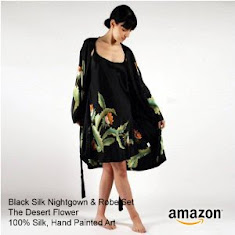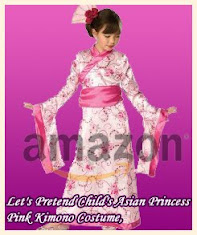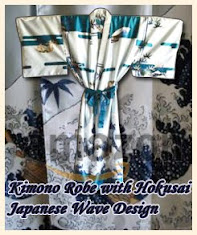A Kimono is one of Japan's most beautiful treasures. This reflects the society and culture of Japan. The history of this traditional dress has changed with the passing of time.
A Kimono is a Japanese dress. It is considered as one of Japan's most stunning treasures. It is pronounced as kee-mo-no. This clothing has a long history and has changed with time. Kimono reflects the society and culture of Japan.
Before, Kimono was an elaborated, intricate wear. Layers of colored Kimono robes became known with Japanese women then. The Jun-hitoe is a 12 unlined robe. This is often worn with the edges of sleeves and collars showing the shades of every kimono. People of the royal court wore up to sixteen kimono layers.
Now, Japanese woman owns only one kimono. Usually, a garment called "furosode kimono" is worn on the coming of age ceremony. This is worn on the Japanese woman's 19th birthday. Bridal kimonos for weddings are more often rented.
Kimonos are not worn as everyday clothing these days. Elders in the rural town of Okinawa still wore traditional kimonos everyday. Japanese traditional clothing like U.S. clothing is worn in order to compliment the season. WAFUKU is the traditional form of Japanese clothing. Japanese clothing is worn according to the person's age or events.
Conventional Japanese clothing like Kimono for women are not only worn based on the person's age. It was also worn because of their marital status. For young single women, they wear long sleeves kimonos with vibrant, colorful, and rich designs. For married women or older women, they wear simple, subdued clothes.
WAFUKU, the Japanese traditional clothing can be categorized into:
• Kimono - basic Japanese clothing
• Yukata - kimono for summer season
• Nagajugan - under wear or garments
For clothing accessories (obi, shoes, socks and others)
• Haori - short jacket made of silk
• Michiyuki - overcoats
• Hakama - Japanese pants
• Uchikake - the most formal kimono
• Shiro-maku - the wedding kimono
Yukata is one of the categories of kimonos. It is a Japanese cotton kimono for summer season. Yukata is worn by Japanese men and women. The word Yukata comes from "yu" meaning bath and "katabira" meaning under clothing.
In the earlier times, Court Nobles wore the "yukatabira", a linen kimono. It was eventually worn by Japanese warriors. Then later, it became known to the general public. Now, Japanese Yukata is widely used for:
- Festivals
- Ryokan
- summer daily wear
- night attire
Yukata is the most popular daily wear in Japan now. This is the most liked clothing because of its lightweight cotton fabric. The design of the fabric varies with conventional cross original patterns to more colorful scenery designs.
There are many matching accessories that you can buy for Yukata. When you a buy Yukata, it has two inches and a sash made of the same fabric that comes from the manufacturer.
You can use the cotton sash for daily or night attire. A larger wider Yukata belt is used for appearing more formal for festivals or public occasions.
You can simply wrap the belt into the waist and tuck it at the edge. You can also use an Obi belt with the cotton Yukata. To complete the attire, match it with a purse, tabi socks and Japanese sandals.
In using Obi sash belt, there are instructions to follow on how to tie the belt over the kimono. These are:
1. Initially pull up the kimono fabric so that the length is at the ankle. The length of the dress is always adjusted.
2. Hold the extra cloth above the waist. Tie the koshi-himo belt under the excess material. Cross the belt at the back, and then tie it in front.
3. Straighten out the excess fabric onto the side. This is to smoothen the back and front of the kimono.
4. To cover the belt, bring down the excess cloth.
5. Wrap the date-jime belt around your waist. This is done to cover the koshi-himo belt. You should tie the so-called "date-jime belt" which is along the front part. Leave the fabric of this "overlapping" kimono visible under. The excess of the fabric should be hanging evenly underneath the belt.
The conventional long obi is difficult to tie. It depends on the style of bow made. Sometimes you need another person to do it for you.
A Kimono is a Japanese dress. It is considered as one of Japan's most stunning treasures. It is pronounced as kee-mo-no. This clothing has a long history and has changed with time. Kimono reflects the society and culture of Japan.
Before, Kimono was an elaborated, intricate wear. Layers of colored Kimono robes became known with Japanese women then. The Jun-hitoe is a 12 unlined robe. This is often worn with the edges of sleeves and collars showing the shades of every kimono. People of the royal court wore up to sixteen kimono layers.
Now, Japanese woman owns only one kimono. Usually, a garment called "furosode kimono" is worn on the coming of age ceremony. This is worn on the Japanese woman's 19th birthday. Bridal kimonos for weddings are more often rented.
Kimonos are not worn as everyday clothing these days. Elders in the rural town of Okinawa still wore traditional kimonos everyday. Japanese traditional clothing like U.S. clothing is worn in order to compliment the season. WAFUKU is the traditional form of Japanese clothing. Japanese clothing is worn according to the person's age or events.
Conventional Japanese clothing like Kimono for women are not only worn based on the person's age. It was also worn because of their marital status. For young single women, they wear long sleeves kimonos with vibrant, colorful, and rich designs. For married women or older women, they wear simple, subdued clothes.
WAFUKU, the Japanese traditional clothing can be categorized into:
• Kimono - basic Japanese clothing
• Yukata - kimono for summer season
• Nagajugan - under wear or garments
For clothing accessories (obi, shoes, socks and others)
• Haori - short jacket made of silk
• Michiyuki - overcoats
• Hakama - Japanese pants
• Uchikake - the most formal kimono
• Shiro-maku - the wedding kimono
Yukata is one of the categories of kimonos. It is a Japanese cotton kimono for summer season. Yukata is worn by Japanese men and women. The word Yukata comes from "yu" meaning bath and "katabira" meaning under clothing.
In the earlier times, Court Nobles wore the "yukatabira", a linen kimono. It was eventually worn by Japanese warriors. Then later, it became known to the general public. Now, Japanese Yukata is widely used for:
- Festivals
- Ryokan
- summer daily wear
- night attire
Yukata is the most popular daily wear in Japan now. This is the most liked clothing because of its lightweight cotton fabric. The design of the fabric varies with conventional cross original patterns to more colorful scenery designs.
There are many matching accessories that you can buy for Yukata. When you a buy Yukata, it has two inches and a sash made of the same fabric that comes from the manufacturer.
You can use the cotton sash for daily or night attire. A larger wider Yukata belt is used for appearing more formal for festivals or public occasions.
You can simply wrap the belt into the waist and tuck it at the edge. You can also use an Obi belt with the cotton Yukata. To complete the attire, match it with a purse, tabi socks and Japanese sandals.
In using Obi sash belt, there are instructions to follow on how to tie the belt over the kimono. These are:
1. Initially pull up the kimono fabric so that the length is at the ankle. The length of the dress is always adjusted.
2. Hold the extra cloth above the waist. Tie the koshi-himo belt under the excess material. Cross the belt at the back, and then tie it in front.
3. Straighten out the excess fabric onto the side. This is to smoothen the back and front of the kimono.
4. To cover the belt, bring down the excess cloth.
5. Wrap the date-jime belt around your waist. This is done to cover the koshi-himo belt. You should tie the so-called "date-jime belt" which is along the front part. Leave the fabric of this "overlapping" kimono visible under. The excess of the fabric should be hanging evenly underneath the belt.
The conventional long obi is difficult to tie. It depends on the style of bow made. Sometimes you need another person to do it for you.
06.37 |
Category: |
0
komentar
.jpg)




.jpg)
.jpg)
.jpg)
.jpg)
.jpg)
.jpg)
.jpg)
.jpg)


Comments (0)